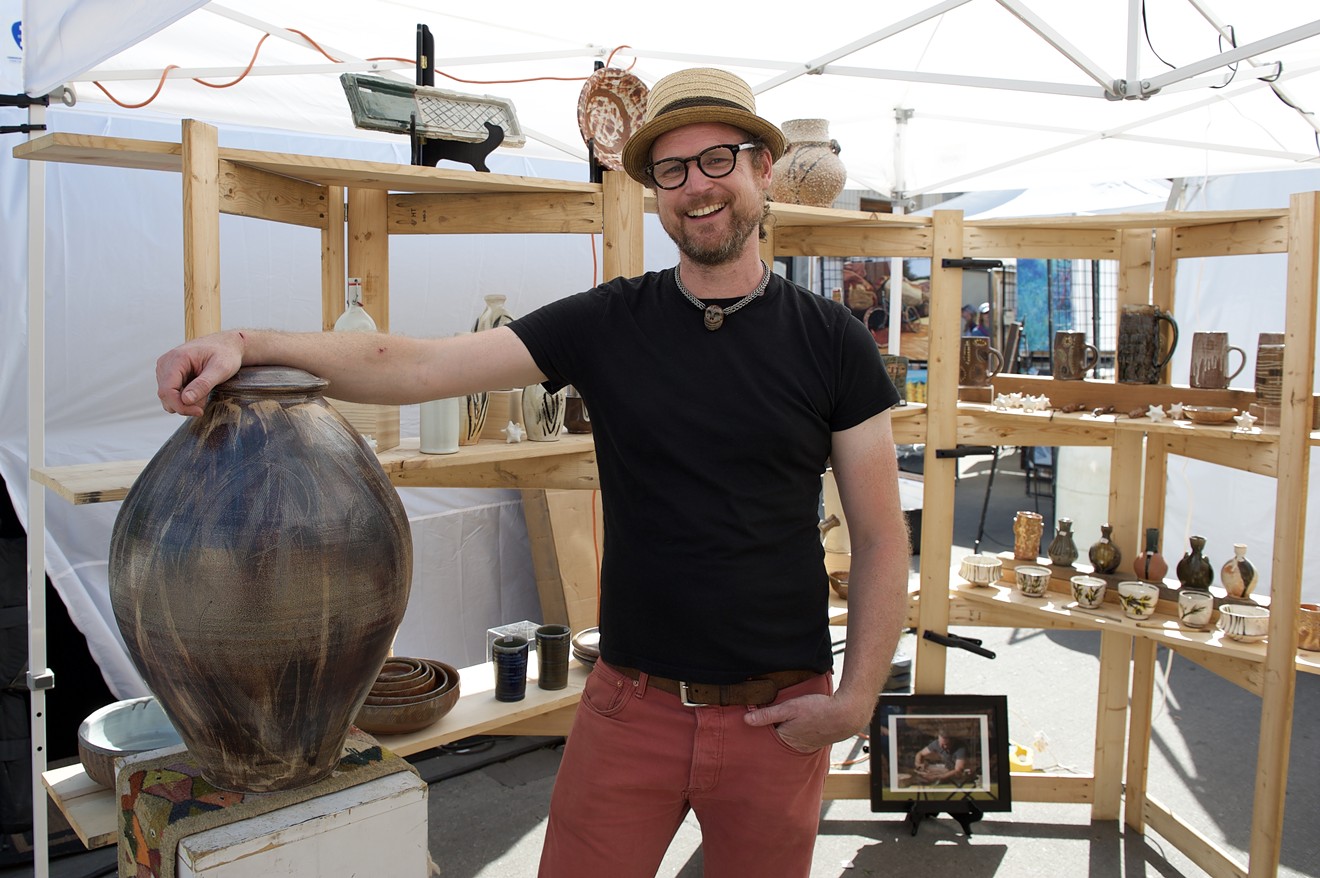All the chickens purchased for an egg harvesting plan died almost immediately, and a bulk seed purchasing arrangement ended abruptly after town elders stole all $1,000 worth of seeds. Even smaller projects which were technically successful, like teaching the Wogogo modern beekeeping methods, didn’t align with Olney’s hopes for the trip.
“I didn’t want to save the world like everyone thinks about Peace Corps volunteers,” Olney says, “but I was frustrated.” This frustration led him to something he had, even unconsciously, been avoiding for the previous year but no longer could: his love and dedication to ceramic pottery.
Born into a self-described art-positive family, Olney began his road to master potter at the small Southwestern University in Georgetown, Texas. There he learned the history of American pottery and functional skills like how to grind and wedge (knead) clay, throw basic pottery shapes and use a wood-fired kiln and wood ash to create simple, naturally colored glazes. Graduating with a degree in ceramics in 2002, Olney decided he wanted to continue his journey, which meant seeking out an apprenticeship from a master potter.
“My then girlfriend and I loaded up my Chrysler minivan and headed for North Carolina,” he remembers.
Although the intent with the trip was only to explore the legendary North Carolina pottery scene and make initial contacts, within three months Olney started an apprenticeship with master potter Mark Hewitt out of Pottsboro. Hewitt is considered a pioneer in the same style of wood-fired ceramic pottery that Olney studied in college and as such he sought out Hewitt as the ideal teacher to help him perfect his craft.
“My days were set up doing hard physical labor half the day and making pottery the rest of the day," Olney recalls. "We would chop the wood, grind the clay, mix it up until it was ready to throw, and then it was time to practice.”
“It was 2006 and felt like the world was changing in a way I didn’t really understand. I wanted to experience something different." – James Olney
tweet this
As a skilled potter, Hewitt would sit at the pottery wheel and form a simple shape like a juice cup in a matter of minutes, then instruct his apprentices to copy the form up to a hundred times.
“That first year sometimes the day would be over and I would have a board of 15 juice cups, and if it were (Hewitt) it would have taken him 10 minutes to make them,” Olney says. “The progress was slow.”
But through slow progress, Olney began to improve both his speed and his eye.
“What he really taught me was how to see form and function," Olney says of Hewitt. "How does this handle feel in your hand? How does this spout pour from this pitcher? He taught me the subtleties of the art, and the subtleties are what connect you to the larger tradition. I did my apprenticeship because I didn’t want to make pots that I thought were good, I wanted to make pots that I knew were good.”
Olney worked under Hewitt for three full years until the conclusion of his apprenticeship, at which time he was conferred his own title of master potter. At this point in many potters' lives, they would either continue their travels and explore other ceramic styles and methods — a journeyman path — or they would simply open their own pottery studio in whatever town they chose. Olney decided to eschew both choices and join the Peace Corps.
“It was 2006 and felt like the world was changing in a way I didn’t really understand. I wanted to experience something different. I was also looking for inspiration and to experience life in a different way,” Olney says.
Thus, after several failed projects in the Wagogo village and nearly deciding to return to the United States, Olney turned his attention to the women potters of the village.
“I told Peace Corps I’m going to work with the local craftsmen because that’s what I know better than beekeeping anyway," Olney says. "I went out and found some great potters and hung out with them for the next year, watched them make pots, and made pots with them."
Olney says the group made cooking pots, bean pots, fermentation pots and purely functional pieces, and Olney found a new purpose and a return to his native skill set made him feel his frustration lifting.
“I was back in my realm again," Olney says.
With a renewed sense of enthusiasm for his craft, Olney returned to Dallas and taught night classes for seven years at the Dallas Craft Guild all while working on his goal of setting up a permanent studio in Oak Cliff, something he accomplished in 2016. He is now working full time on both his own art pottery and functional pottery for local restaurants, including Tei Tei Robata and chef Justin Holt's upcoming Japanese restaurant Salaryman.
Olney's pottery will be on display at the Visual Speedbump Art Tour this Saturday, and he's also found twice a month at the White Rock Farmers Market. At the moment, though, Olney's main focus is on making a really strong form for his pieces, which range from coffee and beer mugs to pie plates and teapots, and putting a very simple, natural glaze on that.
"Then depending on how you stack it in the wood kiln, that wood ash will deposit itself on the piece,” he explains.
The practical effect of these deposits are beautiful, natural colors like fiery oranges and reds, buttery creams and yellows, and even smoky greens and browns. No two are the same, but all Olney’s work is thematically similar and feels like a part of his larger oeuvre.











